In the February 2015 issue of Fine Gardening, we introduced you to a stunning garden in central Illinois designed by Adam Woodruff. Here are the plants featured in each of the photos:

- Prairie dropseed (Sporobolus heterolepis, USDA Hardiness Zones 3–8)
- ‘Summer Beauty’ allium (Allium tanguticum ‘Summer Beauty’, Zones 4–9)
- Autumn moor grass (Sesleria autumnalis, Zones 5–8)
- ‘Moonshine’ yarrow (Achillea ‘Moonshine’, Zones 3–8)
- ‘Kim’s Knee High’ purple coneflower (Echinacea purpurea ‘Kim’s Knee High’, Zones 3–9)
- ‘Autumn Bride’ heuchera (Heuchera villosa ‘Autumn Bride’, Zones 3–8)
- ‘Hameln’ fountain grass (Pennisetum alopecuroides ‘Hameln’, Zones 6–9)
- ‘Purple Smoke’ baptisia (Baptisia ‘Purple Smoke’, Zones 3–9)
- Russian sage (Perovskia atriplicifolia, Zones 6–9)
- ‘Karl Foerster’ feather reed grass (Calamagrostis X acutiflora ‘Karl Foerster’, Zones 5–9)
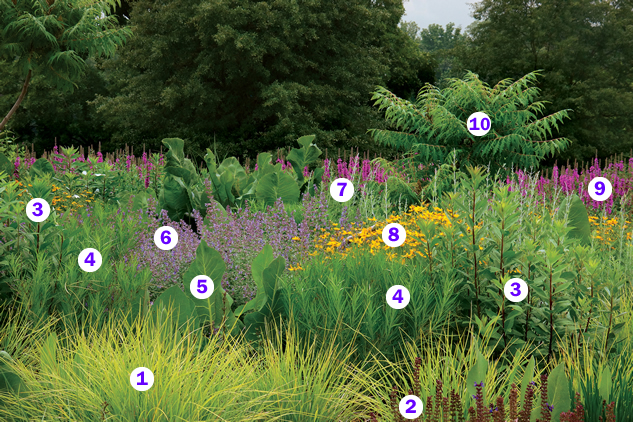
- Autumn moor grass (Sesleria autumnalis, USDA Hardiness Zones 5–8)
- ‘May Night’ salvia (Salvia X sylvestris ‘May Night’, Zones 5–9)
- Showy goldenrod (Solidago speciosa, Zones 3–8)
- ‘Midway to Montana’ amsonia (Amsonia ‘Midway to Montana’, Zones 3–9)
- Prairie dock (Silphium terebinthinaceum, Zones 3–9)
- ‘Walker’s Low’ catmint (Nepeta racemosa ‘Walker’s Low’, Zones 4–8)
- Russian sage (Perovskia atriplicifolia, Zones 6–9)
- ‘Golden Shower’ coreopsis (Coreopsis verticillata ‘Golden Shower’, Zones 4–9)
- ‘Morden’s Gleam’ loosestrife (Lythrum virgatum ‘Morden’s Gleam’, Zones 3–9)
- Cutleaf staghorn sumac (Rhus typhina ‘Laciniata’, Zones 3–8)

- Russian sage (Perovskia atriplicifolia, USDA Hardiness Zones 6–9)
- ‘White Swan’ coneflower (Echinacea purpurea ‘White Swan’, Zones 3–9)
- ‘Black Adder’ anise hyssop (Agastache ‘Black Adder’, Zones 6–9)
- ‘Herrenhausen’ ornamental oregano (Origanum laevigatum ‘Herrenhausen’, Zones 7–10)
- Prairie dock (Silphium terebinthinaceum, Zones 3–9)
- Autumn moor grass (Sesleria autumnalis, Zones 5–8)
- ‘Midway to Montana’ amsonia (Amsonia ‘Midway to Montana’, Zones 3–9)
- ‘Morden’s Gleam’ loosestrife (Lythrum virgatum ‘Morden’s Gleam’, Zones 3–9)
- Cutleaf staghorn sumac (Rhus typhina ‘Laciniata’, Zones 3–8)
- ‘Mardi Gras’ sneezeweed (Helenium ‘Mardi Gras’, Zones 5–8)
- ‘Karl Foerster’ feather reed grass (Calamagrostis X acutiflora ‘Karl Foerster’, Zones 5–9)
- ‘Walker’s Low’ catmint (Nepeta racemosa ‘Walker’s Low’, Zones 4–8)
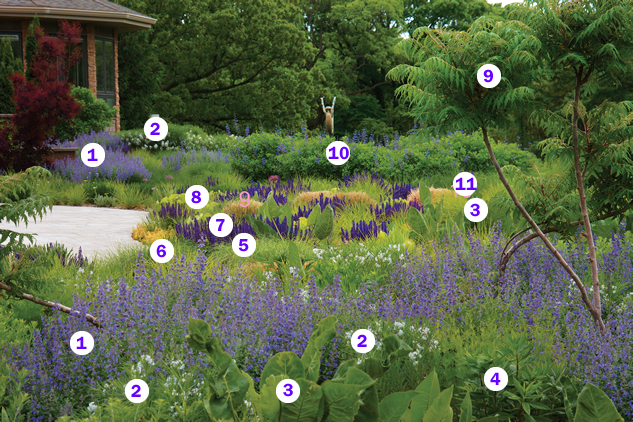
- ‘Walker’s Low’ catmint (Nepeta racemosa ‘Walker’s Low’, USDA Hardiness Zones 4–8)
- ‘Midway to Montana’ amsonia (Amsonia ‘Midway to Montana’, Zones 3–9)
- Prairie dock (Silphium terebinthinaceum, Zones 3–9)
- Showy goldenrod (Solidago speciosa, Zones 3–8)
- ‘Hameln’ fountain grass (Pennisetum alopecuroides ‘Hameln’, Zones 6–9)
- Autumn moor grass (Sesleria autumnalis, Zones 5–8)
- ‘May Night’ salvia (Salvia X sylvestris ‘May Night’, Zones 5–9)
- ‘Autumn Bride’ heuchera (Heuchera villosa ‘Autumn Bride’, Zones 3–8)
- Cutleaf staghorn sumac (Rhus typhina ‘Laciniata’, Zones 3–8)
- ‘Purple Smoke’ baptisia (Baptisia ‘Purple Smoke’, Zones 3–9)
- Amsonia (Amsonia hubrichtii, Zones 5–8)

- ‘Kim’s Knee High’ purple coneflower (Echinacea purpurea ‘Kim’s Knee High’, USDA Hardiness Zones 3–9)
- Autumn moor grass (Sesleria autumnalis, Zones 5–8)
- ‘Summer Beauty’ allium (Allium tanguticum ‘Summer Beauty’, Zones 4–9)
- Lesser calamint (Calamintha nepeta ssp. nepeta, Zones 5–9)
- ‘Autumn Bride’ heuchera (Heuchera villosa ‘Autumn Bride’, Zones 3–8)
- Black Lace™ black elder (Sambucus nigra ‘Eva’, Zones 4–7)
- Prairie dropseed (Sporobolus heterolepis, Zones 3–8)



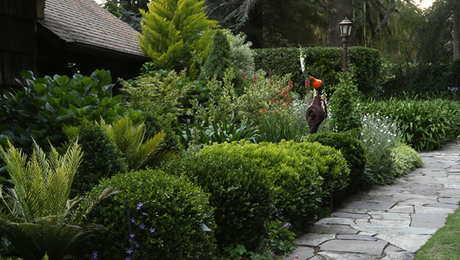
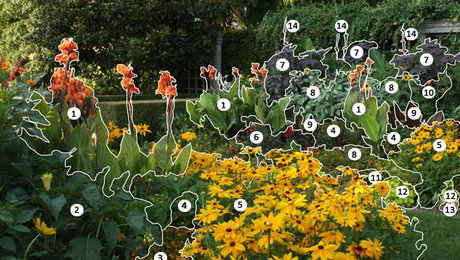
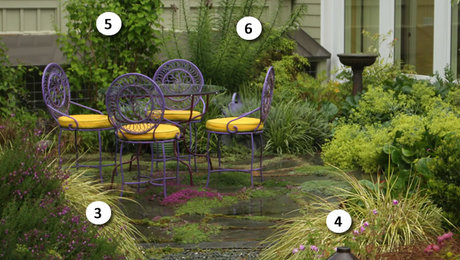












Comments
The magazine version of this article does not identify ‘Morden’s Gleam’ loosestrife, but I recognized a loosestrife from a mile away. From what I've read there are conflicting reports about whether this variety produces seeds, will eventually produce seeds, or is able
to hybridize with other loosestrife varieties. Please correct me if I'm wrong.
You're right. There are conflicting reports. This cultivar is supposed to be sterile but apparently not always. Better choice is Lythrum alatum – a lythrum native to North America.
L. alatum pales in comparison to L. virgatum hybrids when it comes to color and longevity of bloom. Thanks for mentioning it as an alternative, though.
Lythrum virgatum 'Morden's Gleam' is a sterile hybrid. It has been grown in southwestern Illinois for many, many years and has remained non-invasive. There is some dispute over cross pollination with L. salicaria. We do not have L. salicaria growing wild in our area. Of course, I would NOT recommend either species to anyone gardening in the northern Illinois wetland areas. As far as I know, it is not illegal to sell L. virgatum 'Morden's Gleam' in the state of Illinois, although it IS illegal to offer L. salicaria and its hybrids.
Spectacular garden, Adam is immensely talented.
Log in or create an account to post a comment.
Sign up Log in